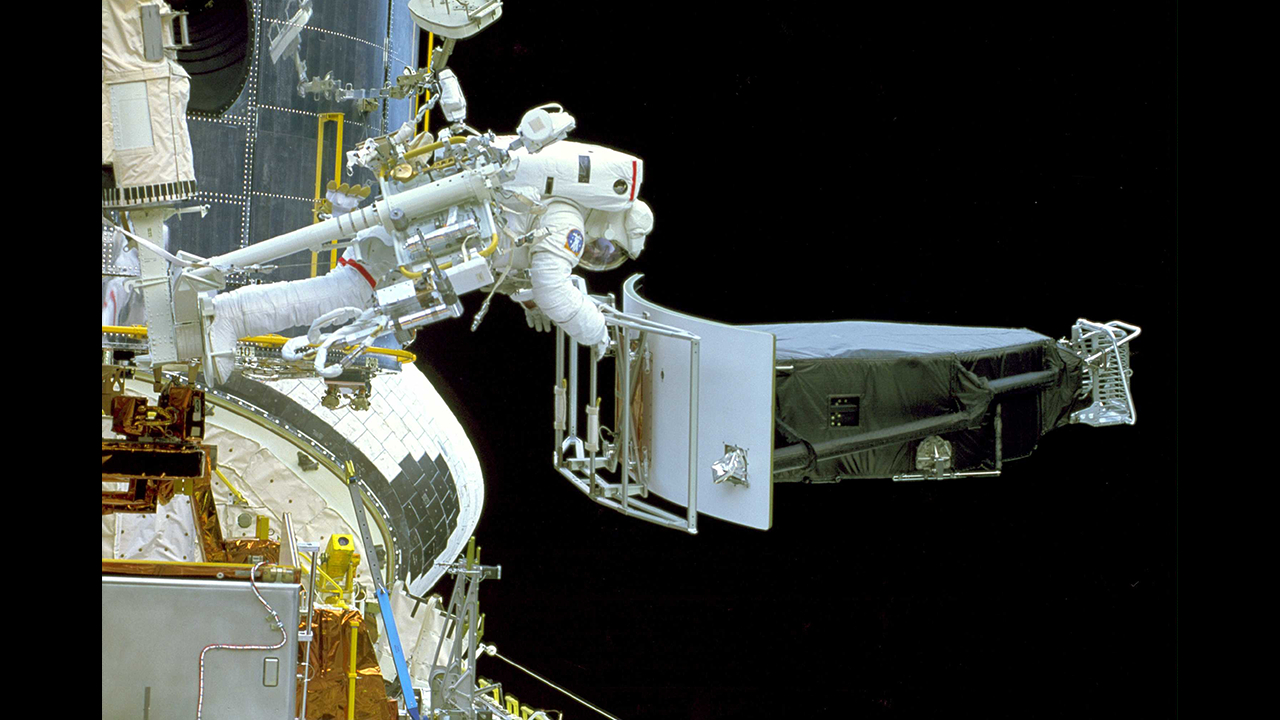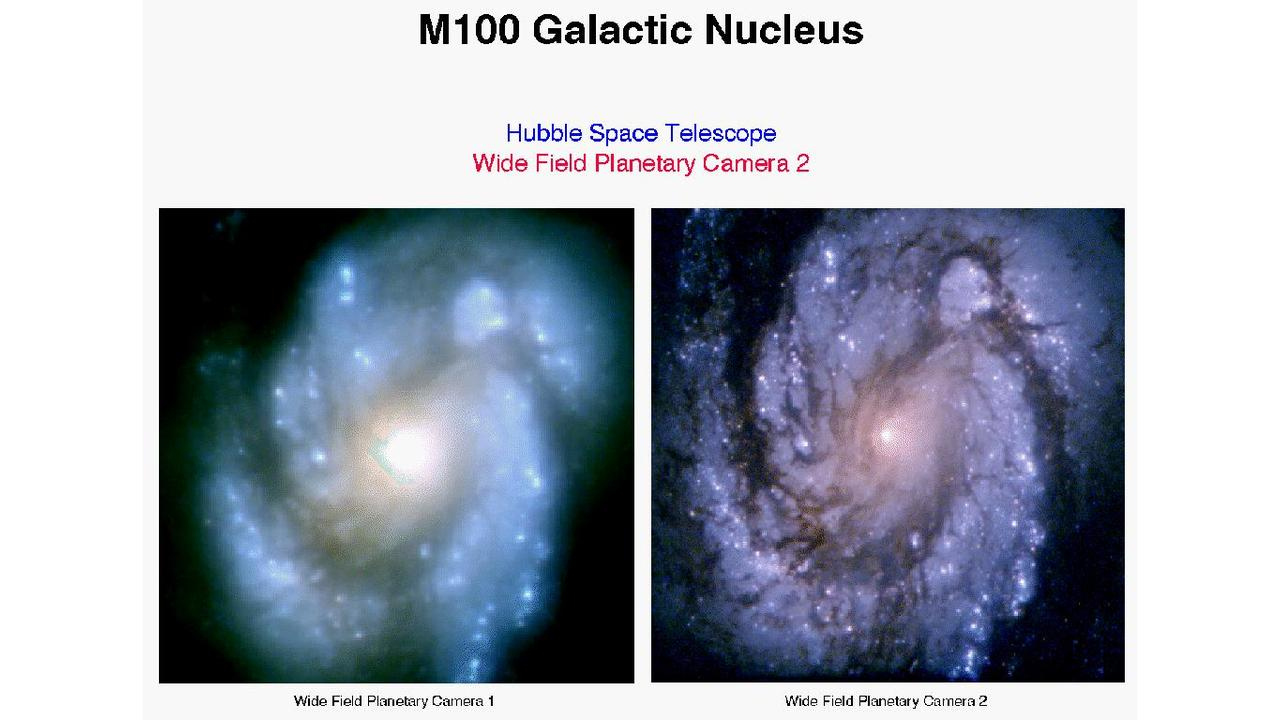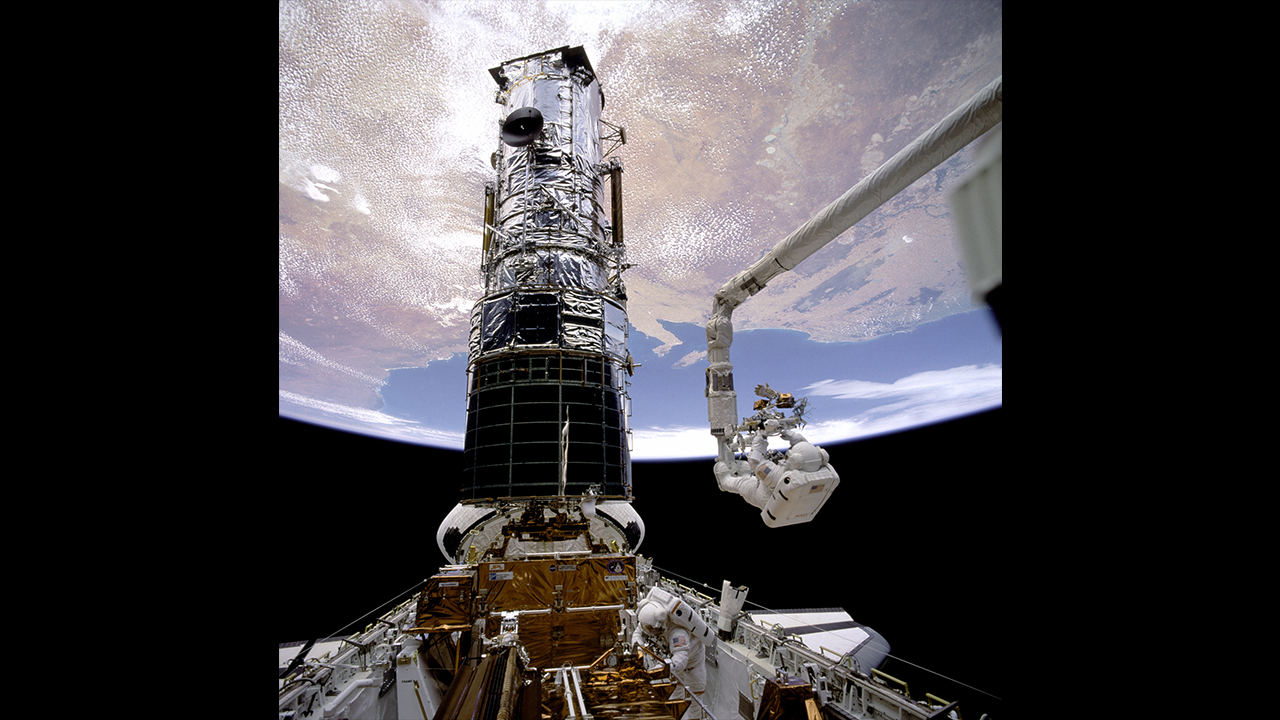30 years ago, astronauts saved the Hubble Space Telescope
Following the repair mission, Hubble’s blurry vision became 20:20.

It's been about 30 years since NASA astronauts saved the Hubble Space Telescope on an immensely daring mission. At the time, it was perhaps the most daring mission scientists had conceived of.. In short, Hubble was launched in 1990 with faulty optics that produced blurred images. Fortunately, however, the space telescope, which orbits Earth, was designed to be physically repaired by astronauts. Yes, mid-orbit.
But even with this capability, before Hubble launched, nobody really expected those repairs to have to come so soon — and in such dramatic fashion.
The story begins 14 years earlier, when work had just begun on "grounding" the giant 2.4-meter mirror that would be the hub of Hubble's optical system. By far the largest telescope sent into space at the time, the mirror had to be ground to exacting specifications. The contract for this arduous task was awarded to a company named Perkins–Elmer.
Related: NASA wants ideas to boost Hubble Space Telescope into a higher orbit with private spaceships
For three years, technicians worked on the mirror blank. They polished, they cleaned, and they of course measured. And they did so over and over again. In order to focus the light of distant galaxies, the mirror's curvature had to be ground to a precision of just five microns, or 0.005 millimeters.
Because such accuracy is beyond the vision of the human eye, technicians used a grid of lasers to measure the mirror's curvature. This grid was maintained by a device called a reflective null corrector, which is a fancy name for a metal rod with an end cap into which a hole is bored for a laser to enter and reflect off a panel of bare metal.
By 1981, the mirror was complete; two years later it was mated with the other components of the telescope, and was set to launch on board a space shuttle in 1986 — only for tragedy to intervene. The Challenger disaster that happened in January of that year led to a three-year cessation of space shuttle launches while the accident was investigated. Hubble sat in a clean room, waiting.
Get the Space.com Newsletter
Breaking space news, the latest updates on rocket launches, skywatching events and more!
Then, on April 24, 1990, its time finally came as it roared into space aboard the space shuttle Discovery to cheers in mission control and from astronomers all over the world.
Yet those cheers swiftly turned to tears. Within a few days, Hubble was active and beaming images back down to Earth, but something was wrong. The images were blurred and an icy chill swept through the NASA hierarchy. Had $1.5 billion been wasted on a telescope with flawed vision?

A subsequent investigation found out what had happened, a catastrophic error dating all the way back to the grounding of the telescope that had remained hidden all that time, like a ticking time bomb. It was found that, on one of the reflective null correctors, a flake of paint had chipped off, gone unnoticed. This exposed a spot of bare metal that the lasers were reflecting off of instead of what they were meant to reflect from. In other words, the reflective null corrector was operating as though it were 1.3mm out of position.
The consequence of this was that the outer edge of Hubble's main mirror had been inadvertently ground to the wrong specifications. It was made too shallow to deal with this situation by just two microns. Though that doesn't sound like much, this tiny error had enormous repercussions. Hubble was designed to focus at least 70% of incoming light into a small circle, but its faulty mirror meant that it could only focus 15% of that light. Everything else was blurred. Such a distortion is called "spherical aberration."
When this all came out, NASA became a laughing stock among the public, with talk show hosts making jokes at NASA's expense and politicians demanding answers. In the end, the solution turned out to be beguilingly simple: What else does an optician do for a short-sighted patient other than prescribe them glasses?
So that's what NASA did.
Hubble's optical system was of the Ritchey–Chrétien design, in which the primary mirror reflects light back up to a smaller secondary mirror that on Hubble is just 30 centimeters (12 inches) wide. The secondary mirror reflects the light back through a hole in the center of the primary, to a focal point behind it where the science instruments — that is, spectrographs and cameras — are located. Fixing Hubble required putting something in the optical path before the light reaches focus to correct for the spherical aberration. These are the "glasses" and the instrument was called COSTAR, the Corrective Optics Space Telescope Axial Replacement.
So a team of seven brave astronauts – NASA's Ken Bowersox, Dick Covey, Kathy Thornton, Jeff Hoffman, Story Musgrave and Tom Akers, as well as the European Space Agency's Claude Nicollier, trained for months in NASA's underwater buoyancy tank, practicing the five space walks that would be needed to install COSTAR as well as replace the original Wide Field and Planetary Camera (WFPC) with a new, more sophisticated model, WFPC 2. They were going to swap out the failing gyroscopes for new ones. The spacewalks were deemed some of the most dangerous spacewalks attempted up until then.
On Dec. 2, 1993 the seven astronauts blasted off on board space shuttle Endeavour on a mission to save Hubble and NASA itself, because if NASA couldn't fix Hubble, how could it be expected to launch and assemble the International Space Station, a task that would be orders of magnitude more complex?

Endeavour snagged Hubble with its robotic arm, drawing the orbiting observatory into its open cargo bay. The five spacewalks and repairs were performed flawlessly by the hero astronauts — and when Hubble next beamed images back to Earth, they were perfect.
The mission to repair Hubble proved to be just the first of many servicing missions to the telescope over the next 16 years, though none proved to be as important or dramatic as that first one. Ironically, COSTAR wasn't even needed in the long-term: those subsequent servicing missions replaced the old cameras and spectrographs with new up-to-date models that were able to correct for the spherical aberration themselves. The final servicing mission, in which the space telescope received a major upgrade, took place in 2009 before the retirement of the space shuttle fleet.
While the James Webb Space Telescope (JWST) may have stolen much of Hubble's limelight, the veteran space observatory is still making vital discoveries. Just in the past 12 months, Hubble has observed the changing weather and seasons on Jupiter and Uranus, found that material falling from Saturn’s rings is heating the planet's atmosphere, spotted a double quasar from when the universe was just 3 billion years old, and has measured the size of the nearest known transiting exoplanet to be 1.07 times the diameter of Earth.
None of the above would have been possible without that brave mission to save the stricken telescope. The repair mission rescued NASA's reputation, but it also ensured Hubble's legacy over the subsequent 30 years, a legacy that has been both profound and astonishing.
Join our Space Forums to keep talking space on the latest missions, night sky and more! And if you have a news tip, correction or comment, let us know at: community@space.com.

Keith Cooper is a freelance science journalist and editor in the United Kingdom, and has a degree in physics and astrophysics from the University of Manchester. He's the author of "The Contact Paradox: Challenging Our Assumptions in the Search for Extraterrestrial Intelligence" (Bloomsbury Sigma, 2020) and has written articles on astronomy, space, physics and astrobiology for a multitude of magazines and websites.
-
MikeMc Reply
Also, It's 20/20, not 20:20 at least in American English. But I noticed that the journalist is from the UK so maybe they write it as 20:20 in the UK. But in the U.S. it is definitely 20/20.Hilbert Space said:The verb is "grinding".









